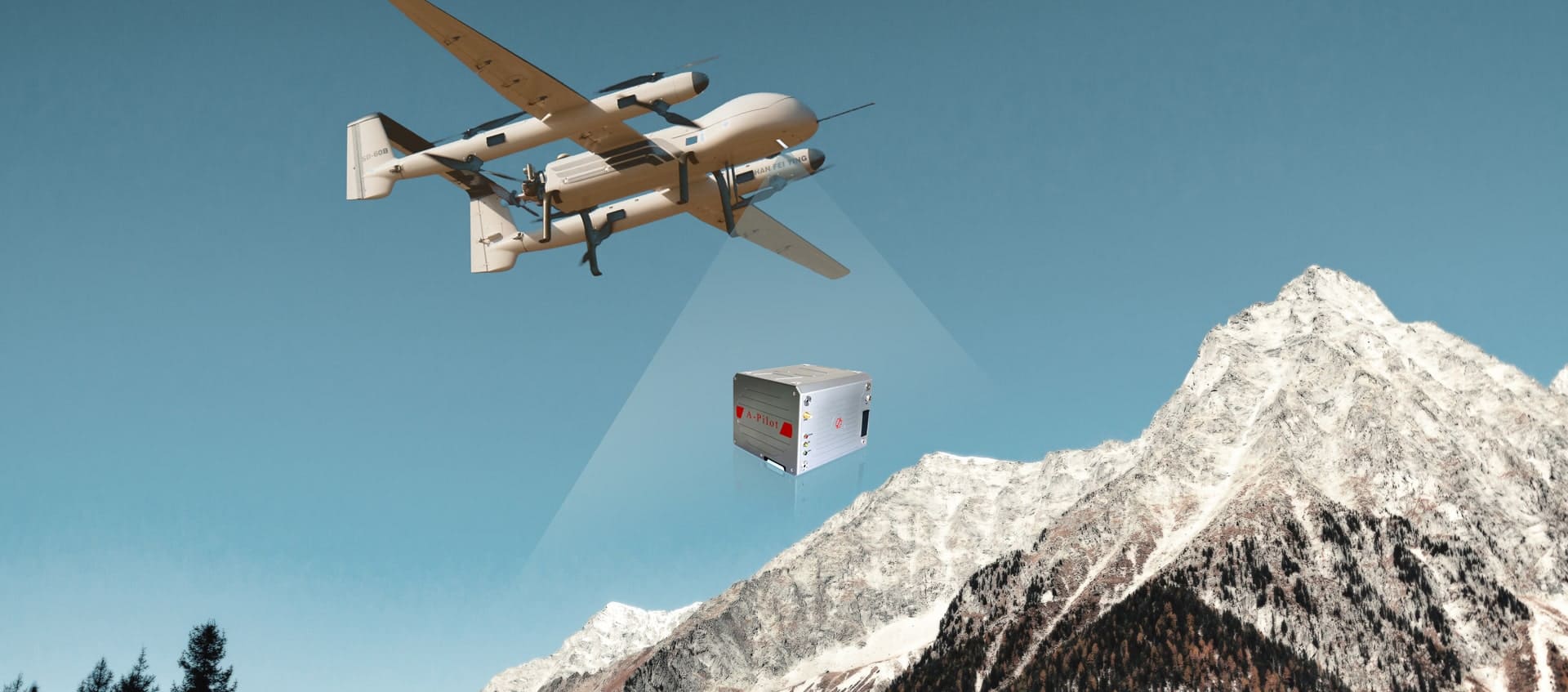What we are thinking about is: As an indispensable core sensor in high-end autonomous driving, what exactly can lidar bring to autonomous driving?
Is high-end autonomous driving already here?
We believe that high-end autonomous driving has the last way to go before it "really arrives"-that is, more brands and more models will be mass-produced.
But the future is not far away, because the industry's exploration of higher-level autonomous driving has never stopped. Since L2 autonomous driving has gradually become popular in cars, in the past three years, not only technology giants and new car manufacturers, but also traditional domestic and foreign auto companies such as Audi and Guangzhou Automobile have successively released L3 autonomous driving solutions. In June 2019, Baidu even launched the L4 autonomous driving perception solution at the world's top academic conference IEEE CVPR in the field of computer vision and pattern recognition. Although the statement that "high-end autonomous driving has arrived" may be a bit exaggerated, for L3 and above autonomous vehicles, the perception system technology solution is already relatively mature.
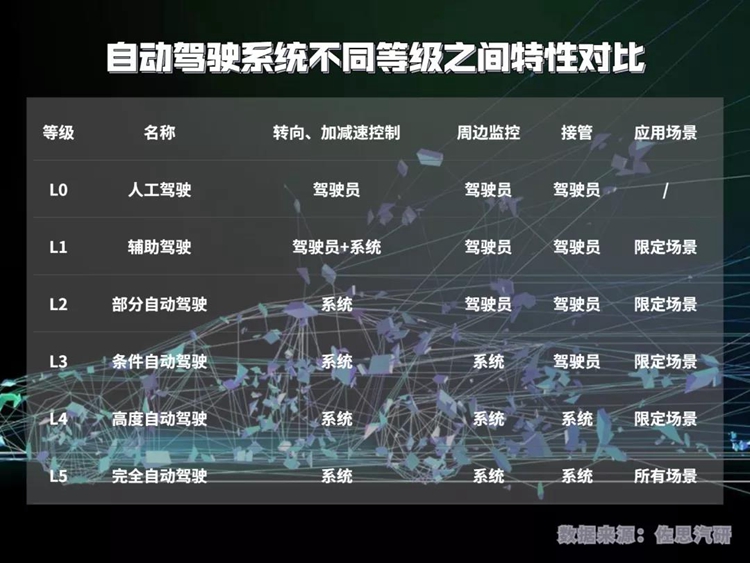
Behind this, one is derived from the advancement of high-precision maps, satellite positioning, inertial positioning and other technologies, which has consolidated the foundation for automatic driving vehicles to achieve accurate perception and safe driving; secondly, it is due to the positioning of various sensors in the automatic driving perception system And the division of labor has been relatively clear, and a high degree of consensus has been formed in the industry.
The "Eye of Autonomous Driving" after evolution
Among all kinds of mainstream sensors, the lidar, known as the "eye of autonomous driving", has received the most attention with its outstanding sensing and detection capabilities.
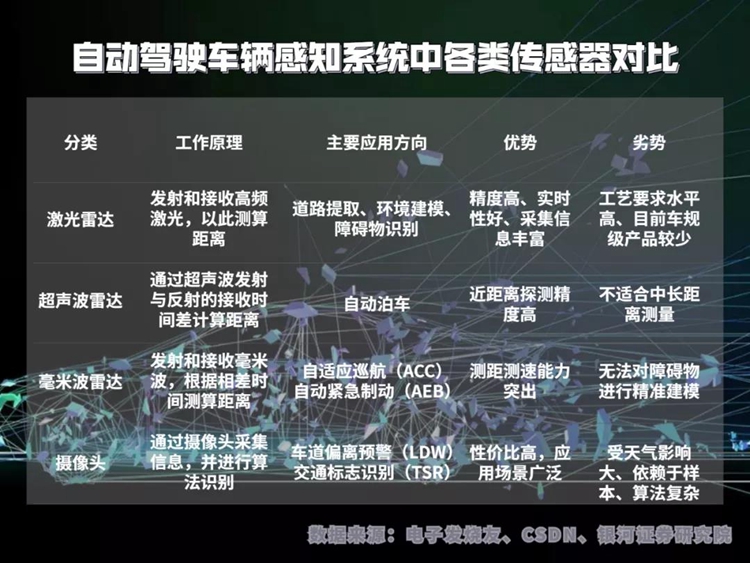
Lidar performs three-dimensional modeling through a point cloud composed of a large number of position point information, so as to obtain the object distance, shape contour, moving speed and other data in the target area. Because it transmits and receives high-frequency lasers, its detection speed and range are much higher than ultrasonic radars, and its ability to model obstacles far exceeds that of millimeter-wave radars.
Compared with cameras, lidar does not require very complex support algorithms, and can distinguish different materials of obstacles in the target area according to the difference in reflectivity of laser signals to improve detection accuracy. This effectively avoids security risks such as "the camera recognizes a pure white truck as a cloud".
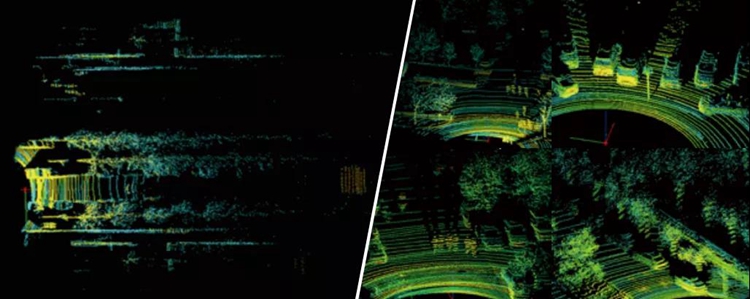
Despite its excellent detection quality, lidar has not been favored by car companies for a long time in the past. Investigating the reason, the crux of hindering the development of lidar at that time was nothing more than the following: large size, high cost, and poor environmental adaptability. This situation has undergone a "reversal" in recent years. The evolution of lidar products has been iteratively entering the fast lane, and many previous problems have been solved one by one.
The head manufacturers in the race track continue to miniaturize the components of the laser radar such as the laser transmitting and receiving module and the signal processing module with the accumulation of technology and continuous research and development. Lidar gradually got rid of its once "silly, big, black and rough" appearance, and many Lidar products on the market have achieved the same size as a bucket of instant noodles.
The lidar that has successfully lost weight can be directly embedded in the body, so that autonomous vehicles no longer need to "put a ball on their head", but return to what a car should be.
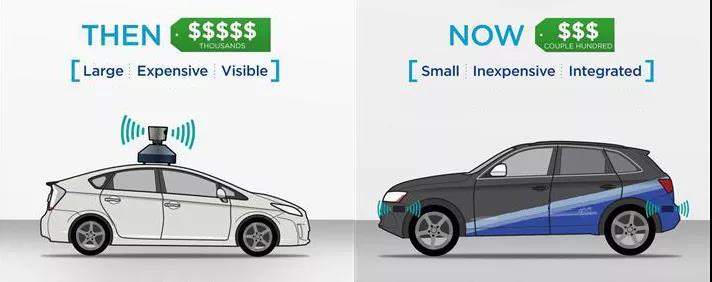
Lidar products themselves do not use a lot of precious metals and very expensive rare materials. There are two main reasons for the high cost of lidar in the past: high R&D investment in precision optical devices, and limited application scenarios and small space requirements, which cannot be mass-produced to share R&D costs.
In the past, Google's unmanned car was eye-catching with its lidar cost of nearly 80,000 US dollars; now, Huawei has used the butcher's declaration of "reducing the cost of lidar to 200 US dollars" to attract people's attention. The quotations of leading LiDAR manufacturers at home and abroad for large-scale orders of car-gauge lidar have broken people's inherent impression of the high cost of lidar.
In addition, in terms of compliance with vehicle regulations, reliability and environmental adaptability, lidar has also made considerable progress in recent years. For example, the domestic lidar manufacturer Surestar, its C-Fans series products are the first front-mounted lidars with a complete car-scale design in China. C-Fans series products adopt chips and semiconductor technology with independent intellectual property rights, and have outstanding features such as low cost, high reliability, low delay, high resolution, and large field of view.
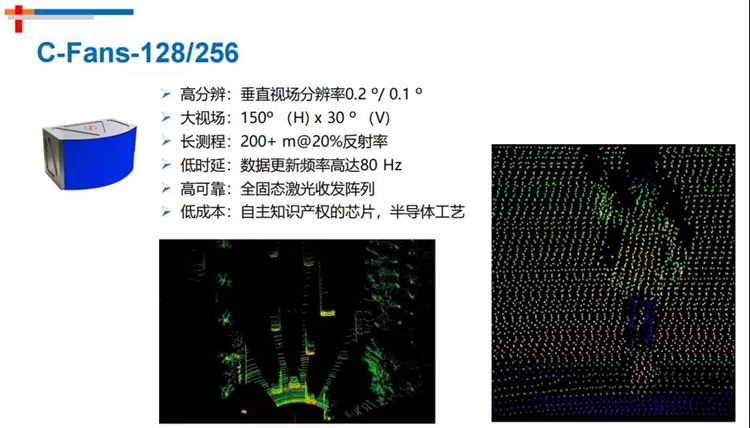
Benefiting from the succession of LiDAR overcoming the many difficulties that have hindered the development of the industry, the new generation of LiDAR products have broken through the "pure unmanned" scenes such as park logistics, scenic ferrying, and unmanned sales in the navigation direction. In addition to the driving scene of passenger cars on the road, most of the current L3 autopilot models on the market use sensing solutions including lidar.
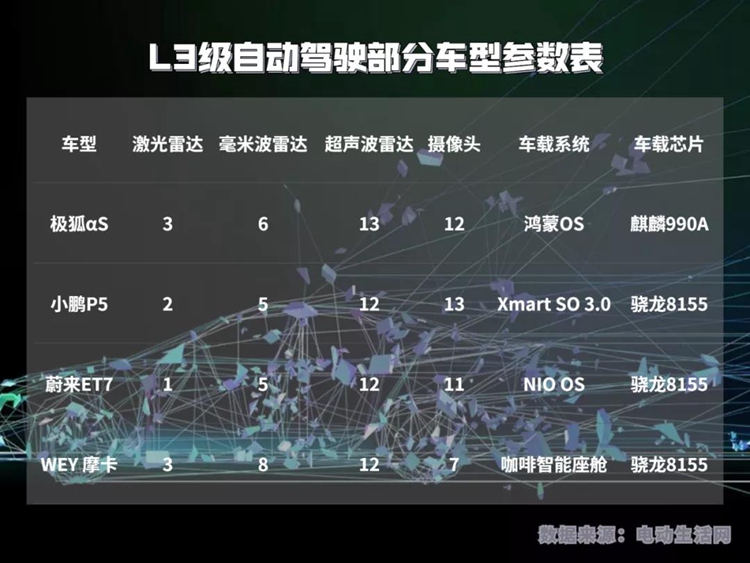
Even Elon Musk, who has insisted on DISS lidar for several years, has "repented". According to Bloomberg News: Tesla and Lidar company Luminar have recently signed a contract to use laser sensor technology for testing and development. Although Tesla may only plan to use lidar to train vision algorithms to accelerate algorithm iterations, as the world's most determined practitioner of pure vision technology, is Tesla's move "ambiguous"?
What does LIDAR bring to autonomous driving?
Based on the maturity of high-end autonomous driving perception solutions, lidar has now secured the top spot in the core essential sensors. This achievement, in addition to the evolution of lidar products, is also due to the fact that the evolved lidar can help realize safer and smarter autonomous driving.
No matter how experienced a driver is, it is almost impossible for a driver to be "knowledgeable" about the road conditions on the right side of the vehicle when turning left without protection. The frame rate of the human eye is usually only 24 Hz, and there is a visual residual of 0.1 to 0.4 seconds. In the complex and high-speed real driving environment, the "high-risk" scenes such as ghost probes, high-speed sudden brakes, and high-speed merging into the main road are basically due to the fact that road conditions often occur in a flash, exceeding the human visual limit. , The driver can only rely on experience or even "premonition" to deal with it more often.
After the self-driving vehicle is equipped with lidar, it is equivalent to a built-in "clairvoyance with God's perspective." In this way, the automatic driving system can always "see six roads" during the driving process of the vehicle, and it is better than a real driver to deal with difficult scenes in real driving environments such as unprotected left turns.
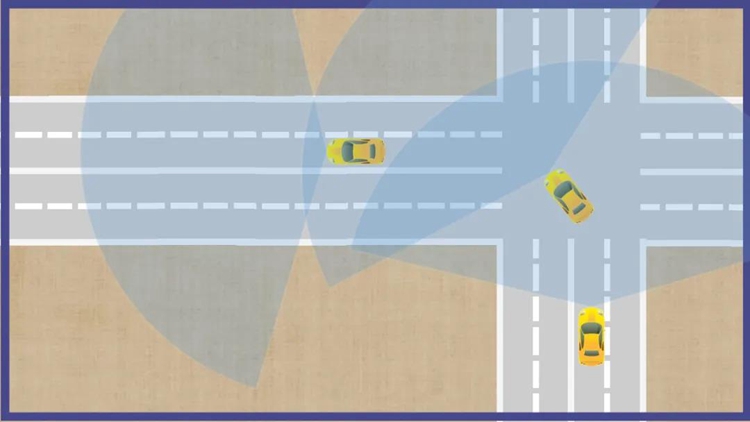
Take C-Fans-256, an image-level ultra-high-resolution solid-state lidar recently released by Surestar as an example. The ultra-high resolution of this lidar can accurately position vehicles and pedestrians at a distance of 200m. Point information capture, for a cube obstacle with a side length of 20cm, the effective distance for accurate identification has reached nearly 60m. With the omni-directional scanning field of view, C-Fans-256 can provide autonomous vehicles with a wide field of view that covers most of the driving difficulties.
C-Fans-256 and other new-generation lidar products have ultra-high frame rates even comparable to those of sports cameras. In the face of the above-mentioned difficult driving scenes, lidar can accurately and quickly capture the above-mentioned difficult driving scenes. Abnormal events allow the automatic driving control system to react in time and control the self-driving car to avoid risks.
In the past, navigation lidar, due to the disadvantages of environmental adaptability and power consumption, except for test scenarios, in most cases can only be used in "greenhouses" with moderate temperature and humidity, wide and flat roads, and regular routes. , Such as logistics vehicles in smart storage areas and industrial parks, RoboTaxi and unmanned trucks on fixed routes in urban areas. Not to mention high-risk places such as mines and factories, it is an ordinary outdoor road environment, and Lidar is also difficult to be fully competent because it cannot pass the vehicle regulations.
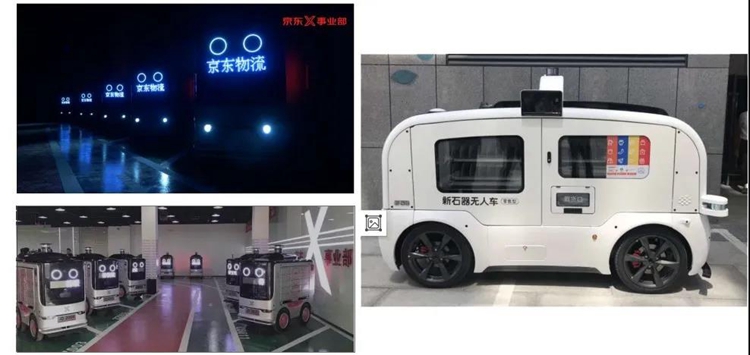
Through continuous optimization of performance parameters, the evolved lidar products themselves are safer, and automotive-grade products have begun to enter the market one after another. Beike Tianhui C-Fans-256 achieves a low power consumption of less than 16W, and successfully passed a total of 31 tests in 9 categories under the ISO16750 standard, with extremely high vehicle compliance.
In terms of environmental adaptability performance, whether it is the severe cold of northeast snowfields falling below minus 40°C, or the extreme heat of the western Gobi where the car body is exposed to 70°C in summer, or unstructured roads in salt fog and humid environments ……Faced with many severe tests, C-Fans-256 all handed in the answer sheet with zero failures.

The new generation of lidar is continuously improving the safety and intelligence of automatic driving, helping automatic driving to further approach the goal of realizing "unmanned driving". Cheng Wei, the founder of Didi, once publicly stated: "We hope that by 2030, the cockpit of shared cars can be removed and autonomous driving in a full sense can be achieved."
The broad prospects in the field of autonomous driving, in turn, spurred the explosive growth of the lidar track. With the goal of "mass production on a large scale" gradually becoming a reality, lidar is also changing autonomous driving. We have reason to believe that in the future when high-end autonomous vehicles are widely used in passenger cars, the smarter and safer driving environment from lidar can make vehicles no longer just means of transportation, but penetrate into every scene of life. In the process, and even change people's way of life.(www.isurestar.net)

